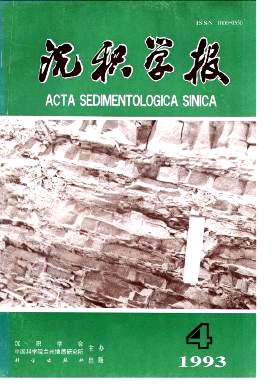On Biological Mineralization with Reference to the Biological Textures of the Pyrites from the Southwest Sulfide Zone
- Publish Date: 1993-12-10
Abstract: The pyrite deposits of the Southwest sulfide zone mainly develop at the bottom of the Permian Longtancoal-series,whivh to a certain extent,has velation with the eruption of the Emeishon Basalt. Investigationsof dcposits by the author paint out some biotrxture-marked pyrites and framF,oidal pyrites. Under SEM andEPA examinations,frambeidal aggcregate of pylite. enolosed within organisms is proved as a kind of from-boidal b.ma}ri.i while t,iotextures of pyrite are causcd by replacemrnt. On the basis of the above studies,theauthor, descrihes a close corrvelation betwcen the biotexturrs and the formation of the framboidal pyrite. Tospeak in detail,when basaltic erupted,flcwrd and reached sea basin, it decomposed right away in the pees-ence of sea water and separated into a great number of ferrugincus materials. These linked befwe long withthe H2S produced through,reduction of sulfate and deconnposition, of ogranic sulfur,all,by bacterium.finally to form pyrite. In the course of later sedirnento-disgenesis,franrboidal sulfur bacteriom were adle to highly brced within buried organisms. In the meantime?if there existed a strongly reducing regime around the microorganisms,the S。 of their bodies would react with the nearby Fe2+HS- and FeS. This led not only ti.precipitation of framboidal pyrites also to perfect preservation of the biotextures which featured them. From the above explanation,one can easily concludes that the pyrite of the study area its mineralizationto the ferruginous influx related to decomposition of basalt by sea water and,what is more important,to ac-tivities of microorganisms and bacterium:one directly having a band in sulfur production and the other beingresponsible for sulfate reduction and,indirectly, for sulfur mineralization.
| Citation: | Xia Xuehui. On Biological Mineralization with Reference to the Biological Textures of the Pyrites from the Southwest Sulfide Zone[J]. Acta Sedimentologica Sinica, 1993, 11(4): 85-91. |






 DownLoad:
DownLoad: